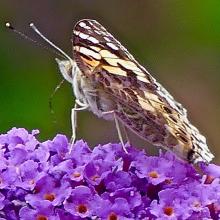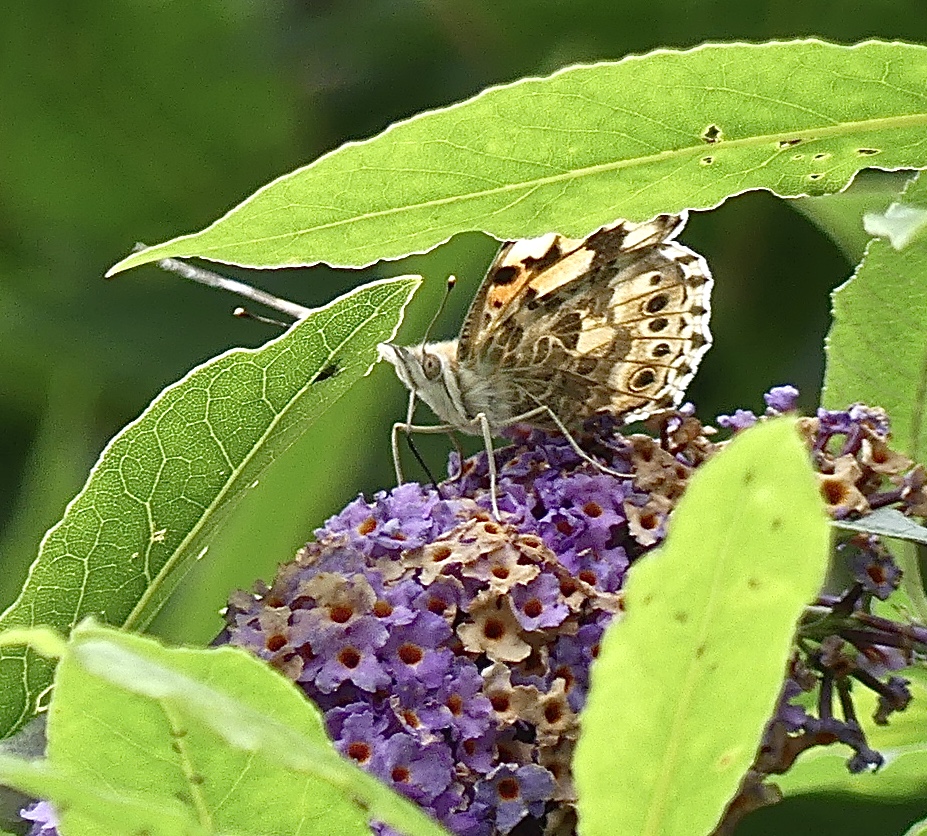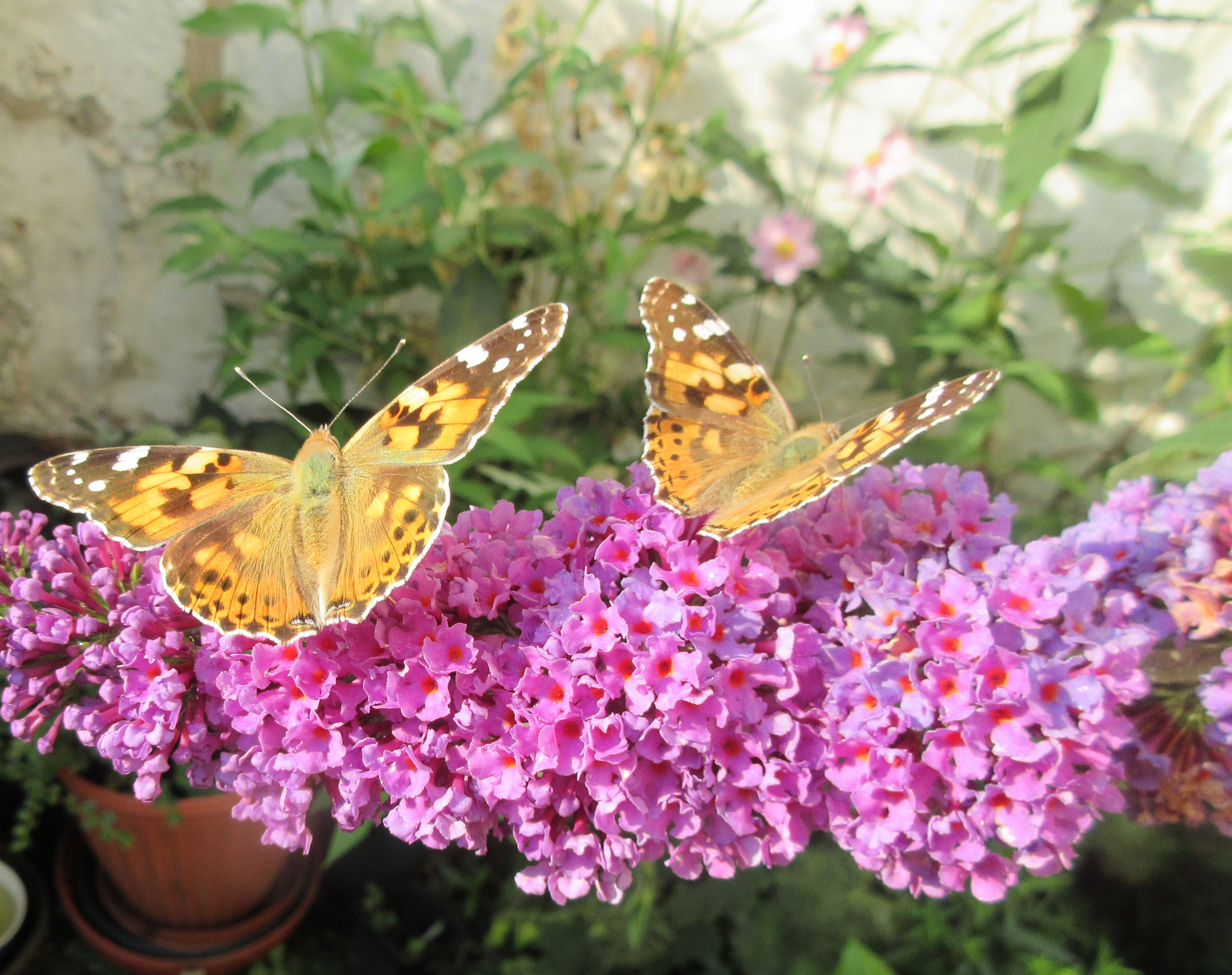
While having coffee with a companion in a Drummond Place back garden earlier this week, I was surprised by a pale orange and black speckled butterfly which landed on our table.
Then suddenly, the air was alive with swirls of this butterfly, together with Cabbage Whites. Could this be one of the c.10 million Painted Ladies migrating to the UK, highlighted recently by naturalist Chris Packham in national media?
At one point, we counted five Ladies in our section of the garden under a blue buddleia and by a blue/white hydrangea. Since then, flurries of both Painted Lady and Cabbage White have visited the garden, and this writer’s ‘Giraffe Garden’ by the Drummond Tennis Club’s courts.
They landed on various flowering plants, and seemed particularly attracted by the colour white – the white coffee table, a white scallop shell, a pale stone step, white clothing. Two days later, a fine specimen landed on a blue/white hydrangea and was photographed by the Spurtle.

Evidently, the Painted Lady can be confused with the Tortoiseshell, which has similar markings. However, the latter has blue dots around the wing edges, while those on the former are white, as indicated here.
Chris Packham has urged people to take part in the ongoing Big Butterfly Count, and to record how many Painted Ladies they see in their locales until 11 August.
It is common for these beautiful butterflies to travel around 5,200 miles from tropical Africa to the Arctic Circle every year. But mass migration of over 10 million Painted Ladies to Europe takes place only once every decade or so – the last one recorded in 2008.
I have had many reports of other sightings in this area alone. More from Spurtleshire will be welcomed.
As we watched these magical visitors in their varying states of languor and ecstasy, we indeed felt blessed, and in awe of a great event.—JRM

-------
Thanks to Steph for this image, taken in her Broughton back garden. At one point she spotted six on a single bloom.
